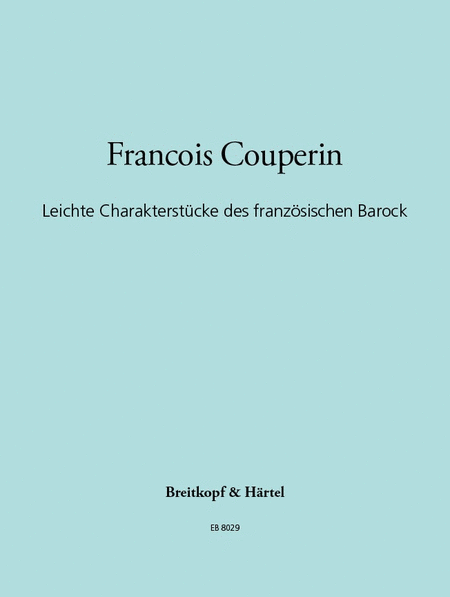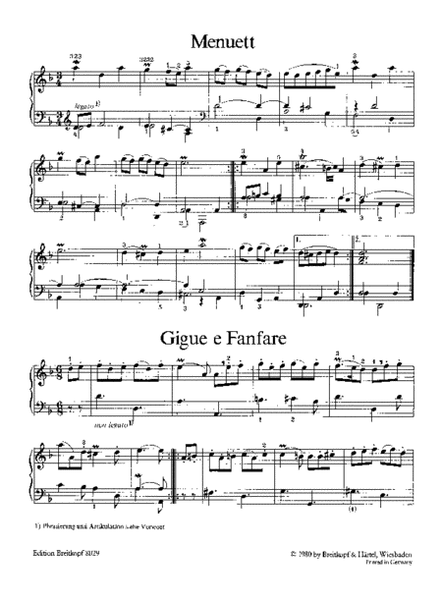Easy Character Pieces from the French Baroque Era
Piano Lessons by Francois Couperin
-
Ships in 3 to 4 weeks
Details
Description
SKU: BR.EB-8029
Piano Lessons by Francois Couperin. Composed by Francois Couperin. Edited by Heinz Walter. Solo instruments; Softcover. Edition Breitkopf. Baroque period. Score. 20 pages. Breitkopf and Haertel #EB 8029. Published by Breitkopf and Haertel (BR.EB-8029).ISBN 9790004174326. 9 x 12 inches.
This series of easy piano music for teaching purposes presents pupils in the lower and lower middle grades with a carefully chosen selection of well-known and lesser-known compositions by important masters. The volumes are deliberately kept small in extent, since it is more stimulating for children to change the teaching material frequently. There are four existing harpsichord books with a total of 226 compositions by Francois Couperin "le Grand" (1668 -1733). His works are as unknown to pianists as they are famous among harpsichord players. The grace and imaginativeness of his works lend themselves especially well to the sound of the harpsichord, which is why the piano interpretation of works by Couperin, Rameau, Scarlatti and other composers of that time has been categorically rejected. But, after all, the works of Bach and Handel were written for the haipsichord and clavichord, and no one would dare question their intetpretation on the pianoforte. In order to introduce these "lmpressionists of the Baroque Era" to piano instruction, the editor has added to this series a folio of both Couperin's and Rameau's (EB 8033) music. The selection of the pieces is based on two criteria: 1. relatively modest demands made on technique, 2. various musical forms of expression. The "Butterflies" and the "Windmills" are both especially typical of masterful character pieces. The demands made on technique certainly correspond to a level of moderate difficulty. The simplifications made are restricted to the artistically realized twopart accompaniment (eg. p. 4 f. and p. 8 f.) with regard to finger stretch and to the profuse ornamentation of the original. The indications for phrasing and articulation are those of the editor. The first two pieces have been precisely elaborated on in this respect to serve as a model, whereas the remaining pieces contain only suggestions. As in other folios of this series; what is here to be stressed, is the importance of working out independently the phrasing and the dynamics. Directions for this are given by the respective footnotes; these directions, however, are not obligatory. lndications pertaining to dynamics and tempo have been omitted completely; the clearly recognizable character of the individual pieces should be direction enough. The tonal possibilities of the piano should in any case be used subtly. The very precise fingerings have been adapted to the suggested phrasings and to the corresponding realization of trills (according to the table). Heinz Walter, Salzburg, Spring 1980.


 Share
Share